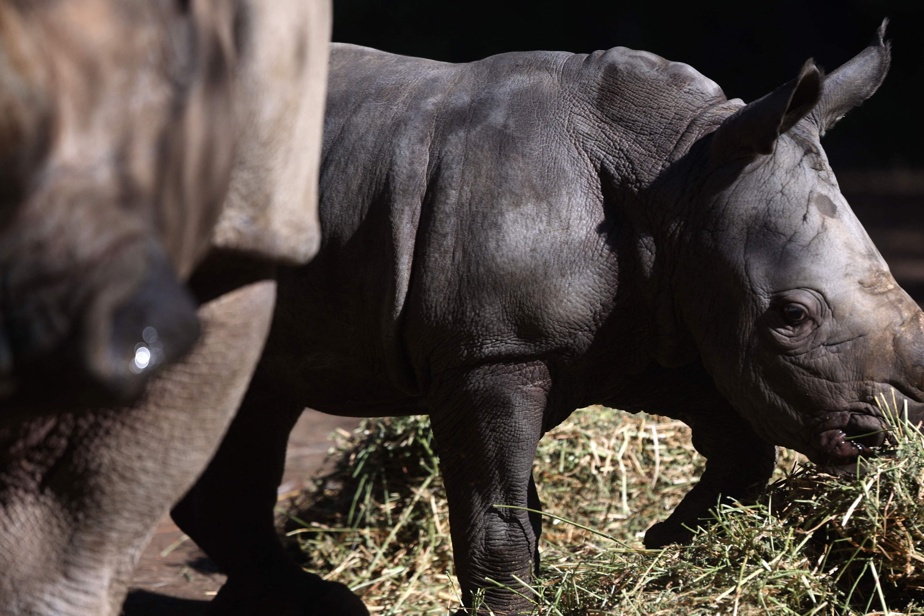(Santiago) Hannah, a 13-year-old white rhino, recently gave birth. A rare birth in a zoo for this nearly endangered species.
The arrival of the male rhino, named Silverio, two weeks ago marked the third time a white rhino has been born in South America. Buin Zoo in the Chilean capital Santiago unveiled Silverio to the public Tuesday as he took his first giant steps after 12 days of medical care in confinement.
The zoo hailed his birth as a “huge achievement” by conservationists around the world. In the past year, only eight other southern white rhinos have been born.
The director of Buin Zoo said a recent spate of failed rhino romances had dashed the hopes of conservationists trying to breed the species across the continent. But Hannah and Oliver – a pair of southern white rhinos shipped to Santiago from sub-Saharan Africa just over a decade ago – have hit it off, fathering three calves at the zoo alone.
“There are several zoos in Latin America that have a pair of rhinos and have not managed to reproduce,” said zoo director Ignacio Idalsoaga. “We are contributing with a ninth calf to a species of which there are only a few left in the wild.”
A team of veterinarians closely monitoring Silverio declared him in good health on Tuesday.
Threatened species
The achievement comes as fewer and fewer white rhinos roam the African plains. Northern white rhinos are effectively extinct, although the international scientific community has begun to revive the species through assisted reproduction and stem cell research.
The southern white rhino, a close cousin to the northern species and a more common species, has been listed as “threatened” by the International Union for Conservation of Nature, the world’s leading scientific authority on the status of species. There are just over 10,000 southern white rhinos left in the world, the vast majority of them in zoos.
This is a major improvement over the early 19e century, when the species was hunted into oblivion. Intensive conservation efforts in recent decades have brought southern white rhinos back from the brink of extinction, a rare example of robust recovery in the face of peril.
But that could change, conservationists say, as hunters continue to kill rhinos for their horns and the mammals can struggle to reproduce in captivity, with an 18-month gestation period and the fact that more than one male is often needed to stimulate breeding.
Humans are the only predators of rhinos, the International Union for Conservation of Nature reports, with hunters killing about 1,000 rhinos a year. About 17 rhinos are said to be born each year.
